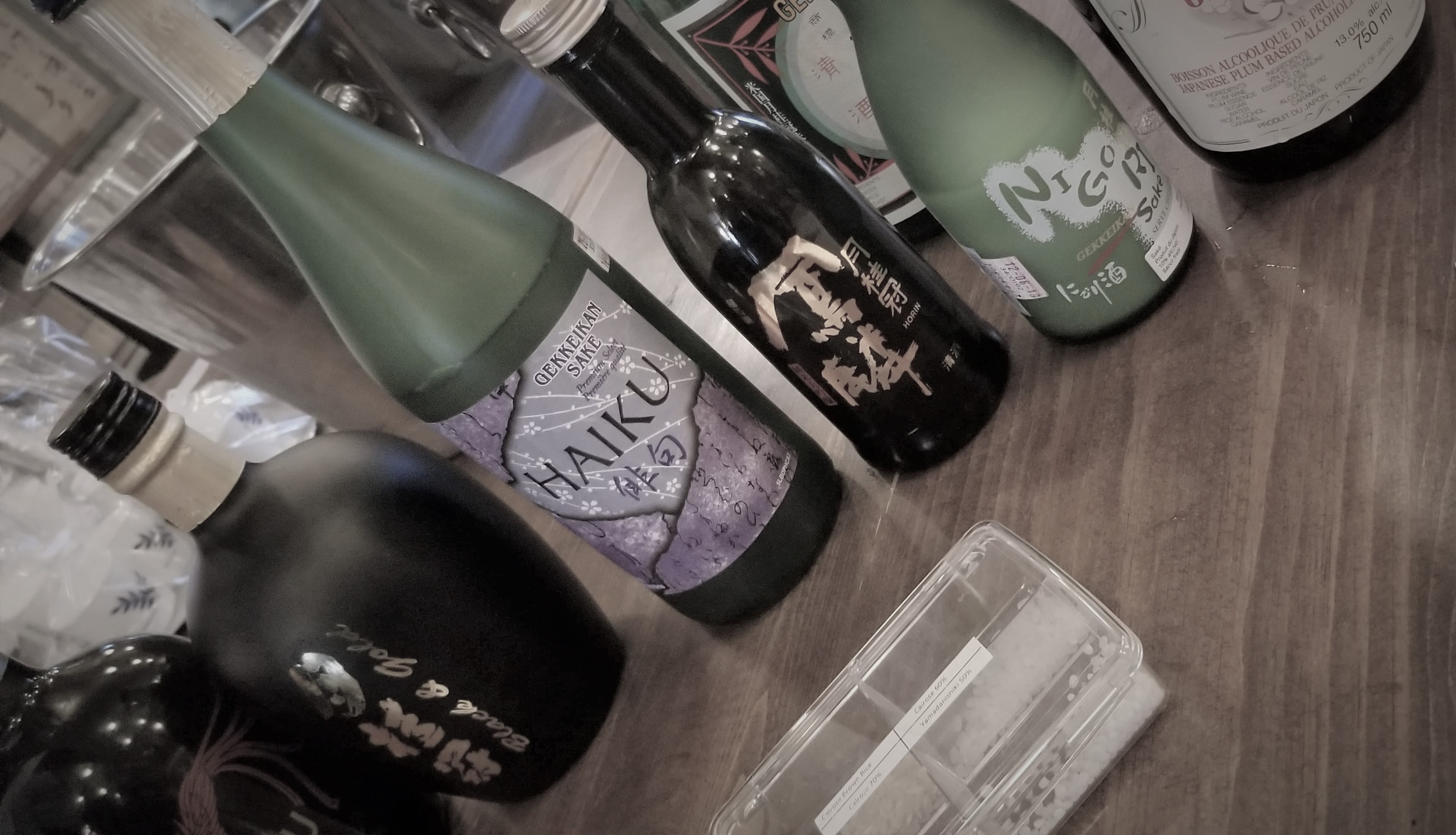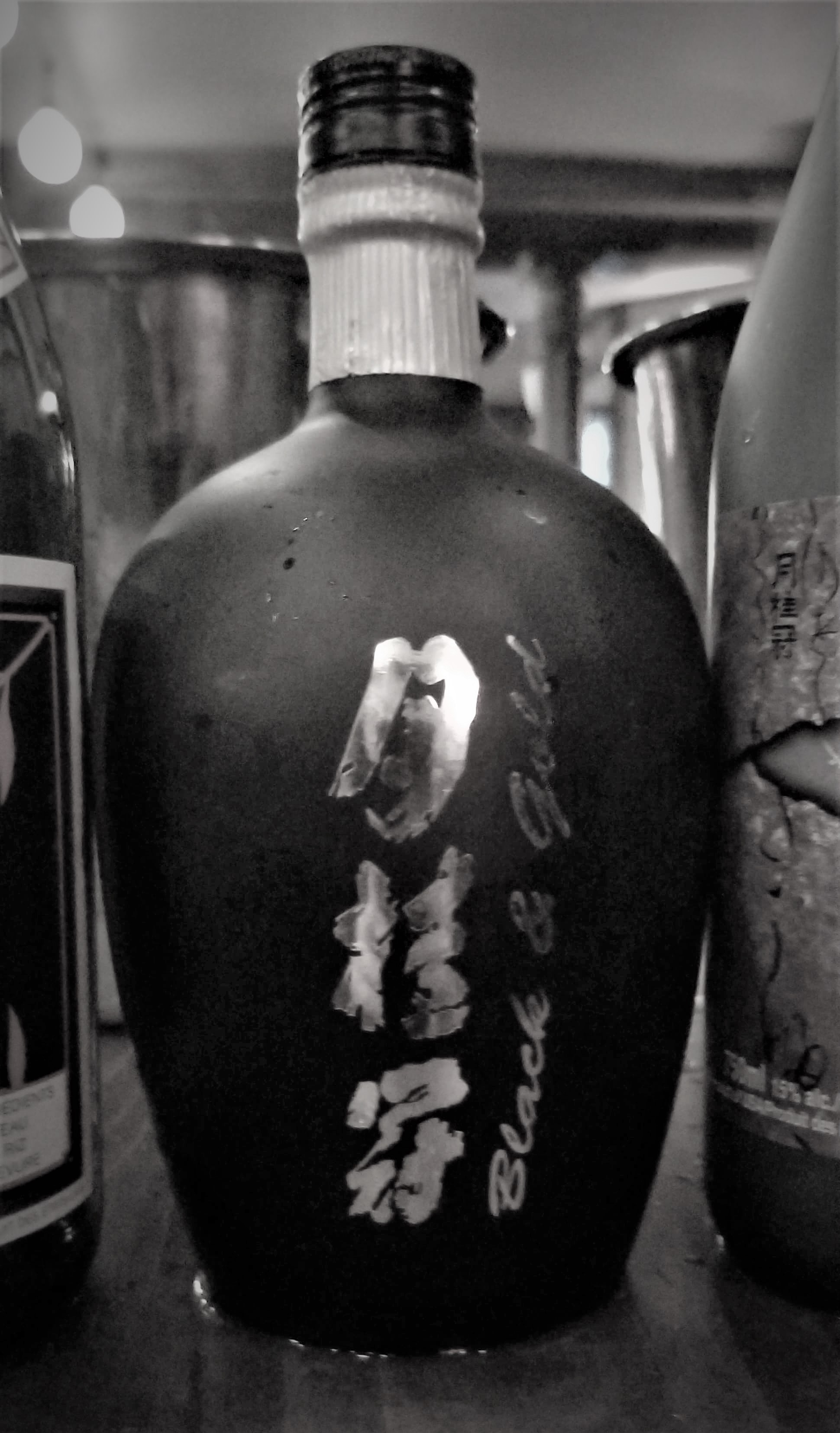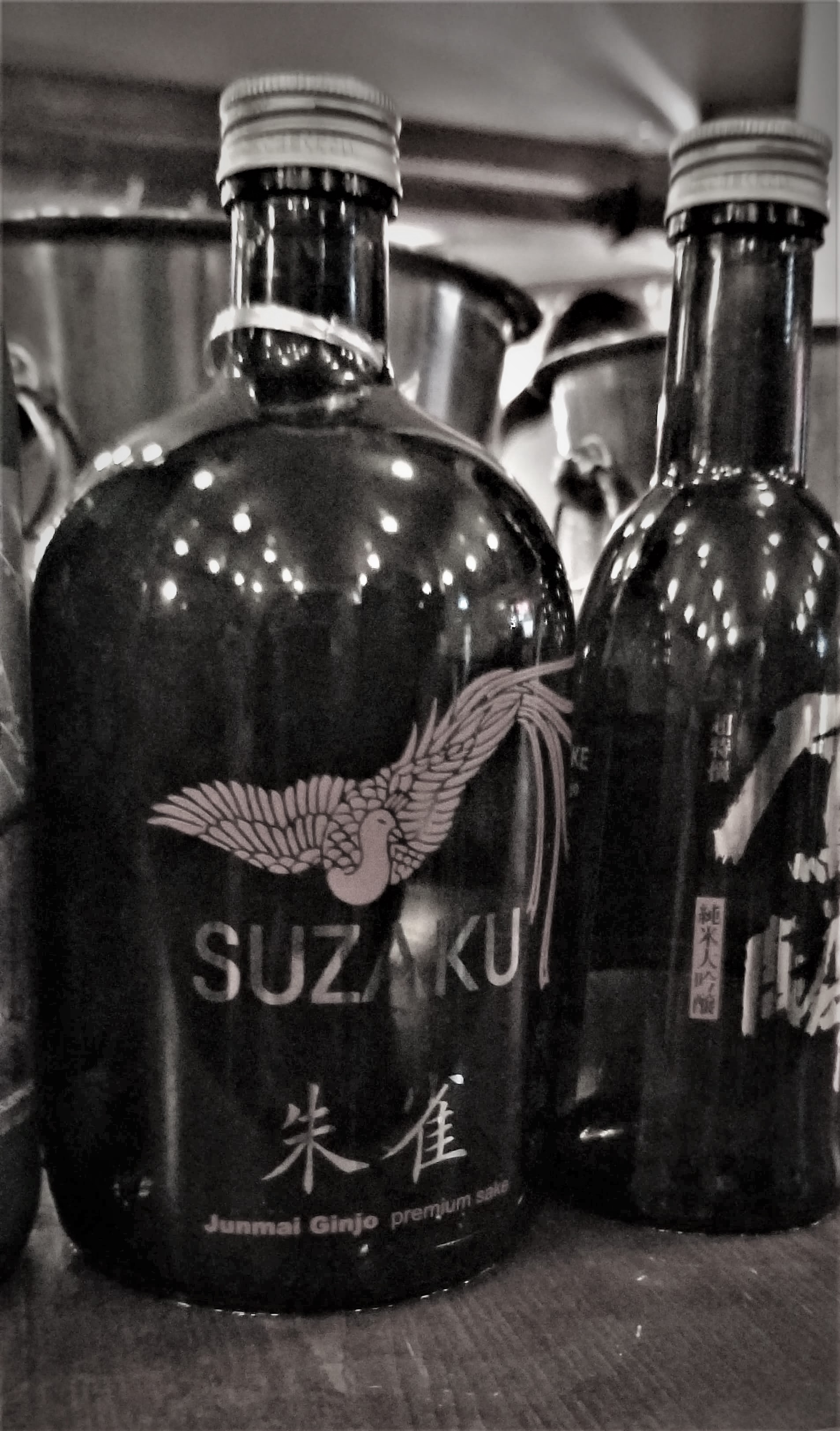I’ve recently started to get interested in Sake. Not necessarily just to ride the wave of Sake love that is hitting Montreal and a few cities around the world right now, but because it’s just so damn good with Asian cuisine. I had my go-to easy pick for when I would endulge in some delicious ramens, but I wanted to get more serious and discover this unique spirit.
Well, the first thing I learned is that there’s a whole bunch of Japanese specific terms that I had never heard before. So, if you’re like me and you want to start exploring the world of Sake here’s all the words you need to know before you get started. Thank me later.
Polishing terms
One of the first steps in sake making is the polishing of the rice. Prior to the actual sake-making process, the rice kernel has to be “polished†— or milled — to remove the outer layer of each grain, exposing its starchy core. The more rice has been polished, the higher the classification level.
Junmai純米
Junmai is the Japanese word meaning “pure rice.†Junmai is brewed using only rice, water, yeast, and koji — there are no other additives, such as sugar or alcohol. Unless a bottle of sake says “junmaiâ€, it will have added brewers alcohol and/or other additives. It’s a popular and searched for category. Additionally, Junmai is a classification of sake that has a milling rate of 30% for each rice grain, meaning that 70% of the exterior grain remains.
Honjozo本醸é€
Similar to Junmai in terms of milling, Honjozo is a classification of Sake with a milling rate of at least 30%. The difference is that this type of sake also includes added additives (alcohol, sugars, etc.)
Ginjo  åŸé†¸
A sake with a milling rate of at least 40%, meaning 60% remains after the process. When used alone, this will be made with additives. You may see it combined with the term Junmai too, Junmai Ginjo. That way it indicates the milling grade as well as the pure rice status.
Daigingo大åŸé†¸
Dai Ginjo is a super-premium It requires precise brewing methods and uses rice that has been polished all the way down to at least 50 percent. Daiginjo sakes are often relatively pricey. The term might be used as well combined to Junmai, Junmai Daigingo
Futsushu普通種
Commonly known as “table sake,” Futsushu typically means any non-premium brew. Barely polished, it can be quite harsh.
Genshu
Normally brewers will dilute sake to bring its natural alcohol percentage of 18-20% down to a more manageable 14-6%. The term Genshu is used to label sakes that have not gone through this dilution process, undiluted alcohol in a way.
Shiboritateã—ã¼ã‚ŠãŸã¦
This refers to unaged sake. Regular sake is often allowed to age or mature for a quick approximate 6 months. Shibotitate will be fresh out of the batch.
Nigori æ¿ã‚Š
Sake that is unfiltered. Typically cloudy with a sediment that settles at the bottom of the bottle.
Kanpai ã‹ã‚“ã±ã„
Translated into “Empty Cup!” or “Cheers!” A very important word indeed.
Koji 麹
Koji refers to the mold culture that is used in the fermentation process. Also called Koji-kin, it’s basically a mold, the Latin name for which is Aspergillus oryzae, used in sake production to break down starches in steamed rice into fermentable sugars.
Kuraãら
Simply means a sake brewery. Also known as a Sakagura.
Tojiã¨ã˜
The master brewer at any given Kura.
Moromi諸味
“The Main Mash.” A vital step in the brewing process of sake where all the ingredients are added together and the fermentation begins.
Shizukuã—ãšã
A time consuming method of pressing sake that involved hanging the Moromi in cloth bags and allowing gravity to separate the fluid from the rest of the mash. Results in very soft and refined brews.
Masuã¾ã™
A traditional square wooden box used to drink sake. Now these are typically reserved for ceremonial purposes and no longer the preferred receptacle for drinking sake.
Choko or O-Choko ã¡ã‚‡ã“
Little sake cups. Often in porcelain.


